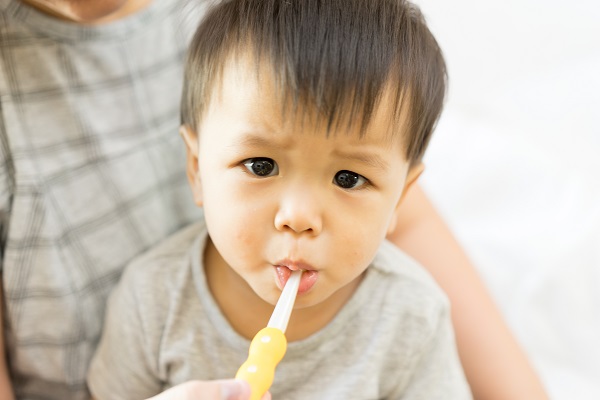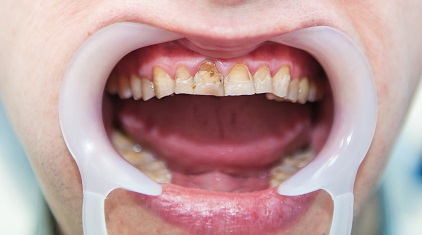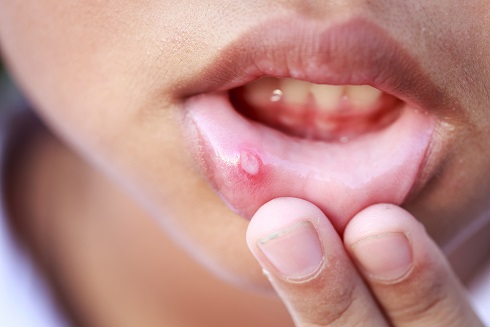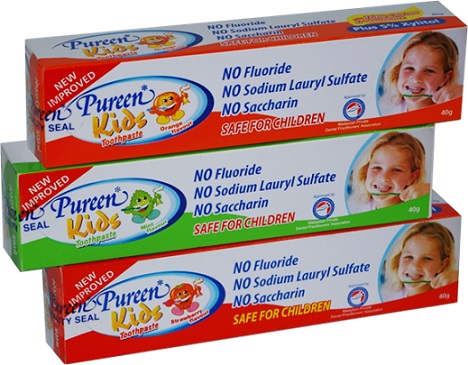A brush with danger: 3 baddies that shouldn’t be in your child’s toothpaste
Let’s take a look at 3 ingredients found in some toothpastes that aren’t safe for kids and then find out what we can do.

Kids largely depend on their parents to keep them safe from harm – but who would’ve guessed that something as mundane as toothpaste could contain harmful substances? If you’re finding the idea hard to swallow, let’s take a look at 3 ingredients found in some toothpastes that aren’t safe for kids and find out what we can do.
Flouride
Fluoride – it’s a good thing… right? Fluoride is a popular toothpaste ingredient because it’s good at preventing tooth decay. Unfortunately, there can be too much of a good thing.

Too much fluoride in the body leads to a condition called fluorosis. At a mild degree, it can cause cosmetic but permanent changes to enamel, making teeth look mottled. In more severe cases, pits start to develop. While most cases are mild, dental practitioners are observing more and more children with the condition.
As a public service, the Singapore government fluoridates tap water at 0.6mg/L. To prevent fluorosis, it is therefore important to use non-flouride toothpaste when a child is still unable to spit out the excess.
Sodium Lauryl Sulfate (SLS)
When we brush our teeth, many of us like toothpaste that foams, perhaps because we think it’s more effective or because it hides the icky stuff that got stuck in between our teeth (try brushing without toothpaste or with a non-foamy one then watch what happens when you spit out after brushing).

The chemical that gives regular toothpastes the ability to foam is sodium lauryl sulfate (SLS). It is also used in laundry products, shampoos and floor cleaners. It shouldn’t then be surprising that SLS irritates our mouths’ protective mucus lining[1]. The irritation leads to mouth ulcers, also known as canker sores.
Saccharin (SHN)
Saccharin was created more than 100 years ago as a sugar substitute and is 300 to 500 times sweeter than sugar[2]. Since then it has been used to improve the taste of sugar-free desserts (cookies and candies), diet drinks and, believe it or not, toothpaste although it’s known to leave a metallic aftertaste.
Scientists continue to debate if saccharin (SHN), derived from coal tar, is harmful to humans. Conflicting results of studies have changed regulatory requirements (warning labels and bans) in different countries over the years. The most controversial study showed that it causes cancer in rats but other studies argue that human organs do not react in the same way.
Nevertheless, just 3 years ago, an investigation published in the Research Journal of Chemical Sciences[3], concludes, “The concentration levels of SHN in the toothpastes
[3] http://www.isca.in/rjcs/Archives/v4/i6/10.ISCA-RJCS-2014-75.pdf
(they sampled) are unacceptable when compare [sic] to the daily acceptable intake (according to the World Health Organisation and Food and Drug Administration).” It mentions that children are particularly vulnerable because they are smaller and cannot control how much toothpaste they ingest.
Alternatives exist!
Of course, we cannot just stop brushing our kids’ teeth. Here are some alternatives to chew on:
If you’re worried about your child not receiving enough fluoride, a dentist or pediatrician can recommend a fluoride supplement, which makes it easier to measure the fluoride intake. They will also be able to give the correct dose based on your child’s diet and water intake.
As for toothpaste brands, kid-friendly ones definitely exist. Pureen Kids Toothpaste (SGD2.20/75g) is fluoride- and SLS-free, and even come in different flavours. Instead of fluoride, Pureen uses xylitol, a natural sweetener that helps protect against tooth decay. Study has shown toothpaste with xylitol led to a decrease in Streptococci mutans colonies in saliva and the increase of pH value5 to neutralize plaque acids.

For better oral hygiene, Pureen Kids Toothpaste also contains triple calcium and phosphate and sodium lauroyl sarcosinate. Calcium phosphate children’s toothpaste had the highest efficacy (effectiveness) in remineralising teeth enamel compared to other types[1]. On the other hand, sodium lauroyl sacrosinate is a safe foaming agent that doubles an agent that prevents bad breath by inhibiting the growth of bacteria.
Pureen products can be conveniently purchased online from Qoo10, Lazada and Shopee. Let’s keep dangerous ingredients away from our little squirts and keep their teeth in tip-top shape!